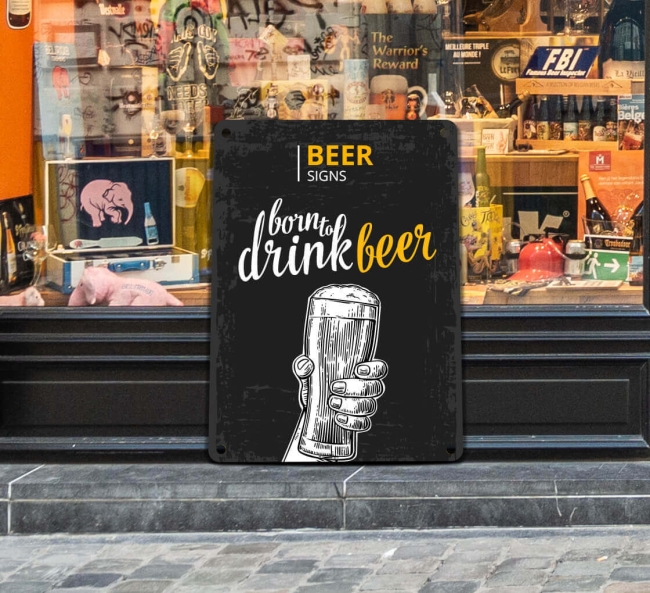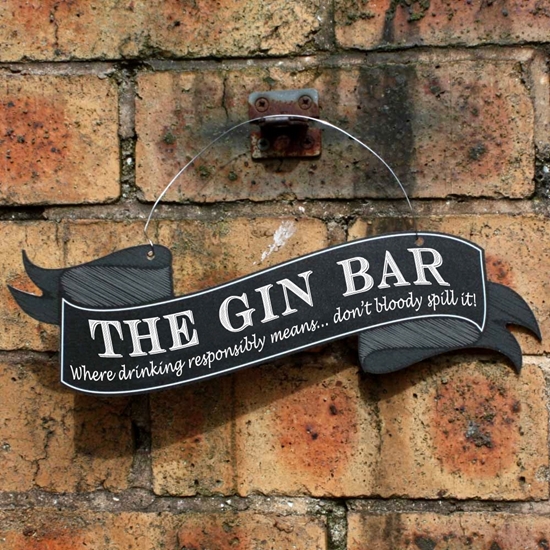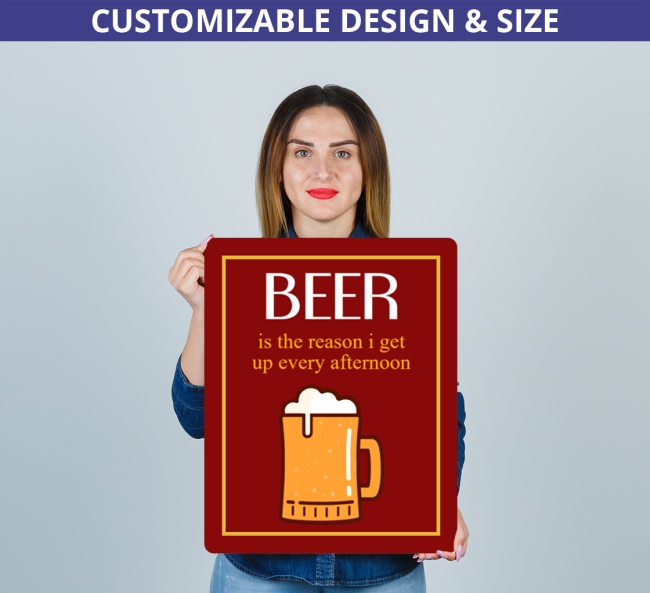Great Info To Picking Bar Signs
Wiki Article
What Are The Differences In Bar Signs Based On Location?
Bar signs differ significantly in terms of location, and also their style, function and location are crafted to ensure their effectiveness in specific regions. This is why bar sign locations vary: Exterior Signs
Use: To create an identity for your bar and attract new customers.
Features: Large and attractive and attractive, with lots of lights that illuminate at night.
Material: Materials such as neon, metals, and weather-resistant vinyl.
Example: The main bar sign The logo sign and the marquee that is above the entryway.
2. Signs for Entrance
The store welcomes customers and provide the basic information.
Features: Clear design with branding, and other elements.
Materials: Metal, wood or signs with lights.
Some examples are "Welcome Signs" Operating hours, "Welcome Signs" and special announcements.
3. Interior Wall Signs
Goal: To improve decor, provide details, and provide ambiance.
Features: Varying in size and design to match interior decor.
Materials: Wood, metal, chalkboard, acrylic.
Examples: Thematic decor signs menu boards, inspirational quotes.
4. Signs for Behind the Bar
Objective: To emphasize important elements like the signature drink at the bar's the name of the bar, or any specials.
Highlights: Bright and well-lit providing a focal point.
Materials: Chalkboard and LEDs. Also, neon lights, digital displays.
Examples: Drink special boards menus, digital displays, and other items.
5. Ceiling and hanging signs
Information on orientation and/or decoration above.
Features Suspended from ceiling, and visible from a variety of angles.
Materials: Light, light materials like foam board, metal or acrylic.
You can use arrows to guide people, attractive signs that hang from the ceiling, or themed props.
6. Tabletop Signs
Use: Provide patrons with details specific to their table.
Features: Small fonts that are easy to read up close.
Materials: Wood, acrylic and laminated paper.
Examples Table numbers, drink menus, or promotional cards.
7. Signs for Restrooms
Utilization: To clearly identify the exact location and the type of restrooms.
Sometimes, with extremely precise symbols and text.
Materials: Metal, plastic, wood.
Signs for male and female bathrooms, and signs for restrooms that are unisex.
8. Directional Signs
Use: To direct patrons to different areas of the bar.
Highlights Labels and arrows that are clear Easy to read.
Materials: Metal, acrylic, wood.
Examples: Signs pointing to bathrooms, exits or other seating areas.
9. Window Signs
Use to inform and draw people to visit the bar.
Features: Visible and often incorporates lighting.
Materials: Vinyl decals, neon, LED.
Examples: advertisements and promotions, event announcements and hours of operation.
10. Promotional and Event Signs
Purpose : To inform customers about seasonal or special offers and events or promotions.
Highlights: Eye-catching and usually short-lived.
Materials include: Vinyl, foamboard, and chalkboard.
Some examples: Event posters or banners.
Location-Specific considerations
Visibility
Signs on the exterior and entrance They must be noticeable from afar to draw customers.
Interior and Behind The Bar Signs Should Be Strategically Placed for Maximum Impact and Readability.
Durability
Exterior Signs: Use weatherproof materials that are able to withstand outdoor conditions.
Interior Signs: They can be constructed using a larger range of materials because they are protected against the elements.
Aesthetic Inclusion
Affixing signs to the bar and behind the bar should be in keeping with the theme of your bar and the interior design.
Signs with directions and information should blend in with the decor.
Functionality
Directional and Restroom Signs: Should be clear and simple to read to ensure customers can find their way around the area effortlessly.
Promo and Event Signs must be changeable, or temporary to reflect the latest offerings.
Lighting
Window and Exterior Signs They are typically illuminated for better visibility at night.
Interior as well as Behind Bar Signs. Use lighting in order to highlight areas or create an atmosphere.
By customizing the design and materials of bar signs in accordance with the place of the sign the bar proprietors can enhance the aesthetics and functionality of their establishments. This creates an inviting and harmonious environment for patrons. Read the recommended twofb.com bar signs for blog advice including pub signs for home bars, pub signs for home bars, personalised beer sign, personalised bar signs, large pub sign, the staying inn pub sign, pub sign hanging, the pub sign, pub signs to buy, pub signs for home bars and more.

What Are The Distinctions Between Bar Signs And Lighting?
Bar signs are different in lighting. This can affect lighting, atmosphere and even impact. Here are some key ways lighting influences bar signs. Neon Signs
Characteristics: Bright, colorful, classic.
Lighting Neon gas-filled tubes produce light when they are charged electrically.
Uses: Great to create a vintage or retro style, commonly used to create logos or bar names as well as eye-catching designs.
Advantages: Very noticeable even from afar, and nostalgic appeal.
The material is brittle and expensive to fix.
2. LED Signs
Characteristics: Energy-efficient, versatile, modern.
Lighting: LEDs emit bright, vibrant light.
Uses: Can be used for indoor or outdoor signs, as well as customizable displays.
Benefits: Energy efficient and durable. The system can be programmed to change colours or even animations.
The disadvantages are the initial cost, but lower maintenance and energy costs.
3. Backlit Signs
Characteristics: Elegant, sophisticated, subtle.
Lighting: Place bulbs, fluorescent lights, or LEDs halogen lamps behind a translucent material to create an ethereal light.
Examples include modern menu boards and bar signs.
Advantages: Clean and professional appearance, which improves readability in low lighting.
Advantages: Easy installation, however higher initial cost.
4. Edge-Lit Signs
Characteristics: Sleek, contemporary, stylish.
Lighting: LEDs can be employed to light the edges of acrylic sign panels.
Applications: Excellent for modern minimalist designs, commonly employed for informational or directional signs.
Features: Provides elegant, distinctive appearances. It's also energy efficient.
Certain design styles cannot be restricted.
5. Ambient/Accent Lighting
Characteristics: Subtle, atmospheric, decorative.
Lighting: Light sources that are indirect can be used to enhance or highlight the appearance of signs.
The uses for this product are The product can be used to enhance the ambience It is often used to draw attention to themes in decor or art.
Benefits: Creates an atmosphere that is warm and inviting.
Negatives
6. Marquee signs
Characteristics: Bold, theatrical, eye-catching.
Lighting: Utilizes multiple light bulbs and LEDs to illuminate the sign.
Uses : Popular for creating vintage films and for creating exterior signage.
Benefits: High visibility and attention-grabbing.
It can be costly to keep up and is a frequent job.
7. Projection Signs
Characteristics: Dynamic, innovative, versatile.
Lighting: The use of projectors to project light and image onto a wall or surface.
Uses: Ideal for events, promotions that are temporary and interactive displays.
Advantages: No requirement to construct the physical structure of a sign.
Negatives
8. Fluorescent Signs
Characteristics: Bright, cost-effective, traditional.
Lighting Tubes with fluorescent light sources are used to light.
It is typically employed on large indoor and exterior signs.
The bright and vibrant colors are perfect for large-scale signs, but they're also relatively cost-effective.
Cons: They're less efficient in terms of energy efficiency than LEDs, and they can create an unnatural lighting.
Lighting Things to Consider
Visibility
Neon and LED signs: Great for drawing the attention of afar, especially in low lighting.
Signs that are backlit and edge-lit: They are perfect for enhancing the clarity of your signage and also giving it a more refined appearance.
Energy Efficiency
LED Signs are energy efficient. They can also last for a long time.
The signs in neon and fluorescent Neon is not as energy efficient.
Aesthetic Appeal
Neon and Marquee Signs: Great for vintage and retro aesthetics.
Backlit and Edge-Lit Signs Ideal for modern, clean designs.
Ambient Lighting: Improves the ambience and overall atmosphere.
Maintenance
LED Signs last and are low maintenance.
neon signs as well as fluorescent signs They need more frequent maintenance and possible repairs.
Cost
LED Backlit Signs - More expensive initial cost, but lower running costs
Signs made of fluorescent are cheaper initially, but they consume more energy in the long term.
Flexibility
Projection LED Signs and Programmable LED Signs offer flexibility and high-dynamic content for displays.
Traditional Signs - More rigid, but can often give a desired look.
Bar owners can enhance their bar's visibility and create the ambience they desire by choosing the correct type of bar sign lighting. They also have the ability to communicate their brand or promotions as well as other details to patrons. See the top rated straight from the source for more tips including personalised signs for bar, bar sign design, indoor bar signs, personalised signs for home bar, personalised bar signs, pub signs to buy, signs for garden bar, bar hanging sign, pub signs personalised, pub signs for home bars and more.

What Is The Difference Between Bar Signs Based On The Budget?
Bar signs are subject to an array of prices according to factors such as dimensions, the type of material, level customization, and requirements for their installation. The costs for bar signs differ greatly. Material Cost
Low-cost materials: Signs made of foam board, vinyl stickers, or basic acrylic are typically cheaper.
Signs made from premium materials such as wood, metal or custom glass can cost more due to material costs and craftsmanship.
2. Design Complexity
Simple Designs: Signs that have simple designs, minimal text, and basic images are typically less costly to create.
Complex Designs: Signs that have intricate graphics, custom typography, or special effects (e.g. neon, LED) require more time and expertise which can result in higher costs.
3. Customization
Standard Options - Templates that are pre-designed and other off-the-shelf signage options are often cheaper than custom-designed signs.
Customized Features: Although custom logos, branding, and colors add to the cost, they also provide unique branding options that are customized to fit your bar's brand.
4. Size and Scale
Small-Scale Signs: Tabletop sign decals, tabletop signs, or wall-mounted signage are usually cost-effective due to the lesser material and production costs.
Large-Scale Displays: The use of large signage, marquees that are outdoor and illuminated displays requires additional materials, work and cost.
5. Lighting
Non-illuminated Messages: Non-illuminated messages generally are less costly than illuminated messages, as they use less elements and need less electrical work.
Illuminated Signs - Neon, backlit LED signs and backlit LED signs cost more due to additional wiring, materials, and power consumption.
6. Installation
DIY Installation: Signs that can be easily installed by bar owners or staff will cost less than those that need professional installation.
Professional Installation Signs that are large or complicated ones could require a skilled installer. The cost is higher however, installation is completed right and in line with safety standards.
7. Quantity
Bulk orders may qualify you to receive discounts on quantity or per unit costs when compared with single orders.
The cost of ordering single signs, custom pieces, or other products could be more expensive due to the production and setup costs.
8. Maintenance and long-term costs
Signs with low maintenance or long-lasting life: Signs which require little maintenance and last a long time could provide significant cost savings over the long run.
Signs that require high maintenance: Signs that have intricate designs, delicate material or require special attention can result in higher expenses.
9. Budget Allocation
Budget Allocated: By establishing an allocated budget to signage, bar proprietors are able to prioritize their spending to focus on important elements like branding, visibility, and durability.
Cost-Benefit Analysis: Examining Return on Investment (ROI) Bar owners are able to make educated decisions regarding where they should allocate their budget for maximum impact.
Financing Options
In advance payment - Paying in advance is a efficient option than an installment plan or loan, since it eliminates charges for financing and interest.
Financing plans: Some sign makers provide payment plans or financing options for spreading the cost of their signs over time. This makes higher-end signage more affordable for bar owners who have limited capital up front.
Bar owners can choose signs that represent their brand's image effectively. It enhances customer service and aids them in reaching their goals overall by taking into consideration these factors. Have a look at the top rated her comment is here about window vinyl for website advice including make a bar sign, buy bar signs, pub sign hanging, personalised pub signs for sale, pub signs for garden bar, bar wall signs, pub signs to buy, personalised cocktail bar sign, hanging home bar signs, personalised garden bar signs and more.
